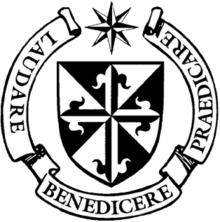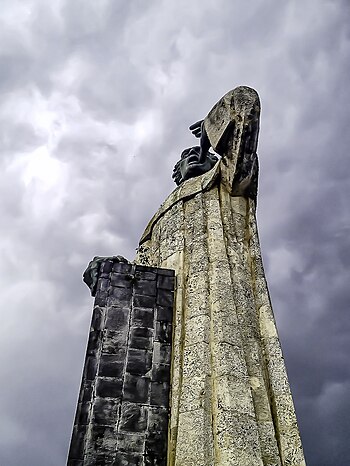
Quick Facts

Biography
Antonio de Montesinos or Antonio Montesino (Spain, c. 1475 - Venezuela, 1545) was a Spanish Dominican friar who was a missionary on the island of Hispaniola (now the Dominican Republic and Haiti). With the backing of his prior, Friar Pedro de Córdoba, and his Dominican community at Santo Dominigo, Montesinos preached against the enslavement and harsh treatment of the Indigenous peoples of the Island. Montesinos' preaching led to Bartolomé de las Casas' conversion and his entering the Dominican Order.
Biography
Montesinos became a Dominican friar at the convent of St. Stephen in Salamanca, where he may have studied. He was part of the first band of Dominican missionaries to go to Hispaniola island, in September 1510, under the leadership of Pedro de Córdoba.
On December 21, 1511, the fourth Sunday of Advent, Montesinos preached an impassioned sermon criticizing the practices of the Spanish colonial encomienda system, and decrying the abuse of the Taíno Indian people on Hispaniola. This was 19 years after Christopher Columbus had landed on the island and Spain started to colonize it.

Listing the injustices that the indigenous people were suffering at the hands of the Spanish colonists, Montesinos proclaimed that the Spanish on the island "are all in mortal sin and live and die in it, because of the cruelty and tyranny they practice among these innocent peoples." According to Bartolomé de las Casas, who was a witness, Montesinos asked those in attendance,
Tell me by what right of justice do you hold these Indians in such a cruel and horrible servitude? On what authority have you waged such detestable wars against these people who dealt quietly and peacefully on their own lands? Wars in which you have destroyed such an infinite number of them by homicides and slaughters never heard of before. Why do you keep them so oppressed and exhausted, without giving them enough to eat or curing them of the sicknesses they incur from the excessive labor you give them, and they die, or rather you kill them, in order to extract and acquire gold every day.

The sermon outraged the conquistadors, including Admiral Diego Columbus (son of Christopher Columbus) and other representatives of the King. Montesinos' sermon had a formative impact upon Bartolomé de las Casas, who heard it firsthand. Las Casas became well known for his advocacy of the rights of indigenous peoples of the Americas.

The primary policy of the Preaching Friars (Dominicans) in the New World was to aid and represent the aboriginal American Indians under Spanish and Portuguese rules, a policy for which they fought for over three centuries. The initial result of the protests of the friars at Santo Domingo was an order from King Ferdinand II that Montesinos and other Dominicans who supported him should be shipped back to Spain. Ferdinand at first referred to the preaching of Montesinos as "a novel and groundless attitude" and a "dangerous opinion [that] would do much harm to all the affairs of that land". After returning to Spain, Montesinos and his companions were able to persuade the king of the righteousness of their position.
As a result, the king convened a commission that promulgated the Laws of Burgos, the first code of ordinances to protect the indigenous people, regulate their treatment and conversion, and limit the demands of the Spanish colonizers upon them.
In June 1526, with Fr. Anthony de Cervantes, and Fr. Bartolome de Las Casas accompanied 500 colonists under the leadership of Lucas Vásquez de Ayllón to found San Miguel de Guadalupe. This mission was possibly located at the James River, where the English subsequently founded Jamestown of the Virginia Colony; other historians believe it was closer to present-day Savannah, Georgia. These Dominicans celebrated mass for the first time in the present-day United States.
On the death of Ayllón (October 1526), purportedly in the arms of a Dominican friar, the colony was abandoned. Montesinos and 150 other survivors returned to San Domingo. According to Helps, "Spanish Conquest in America", he went to Santa Ana de Coro (Venezuela) about 1528 with twenty of his brethren Dominicans in the expedition of the German Welser of Augsburg. Little more is known of the rest of his life except that he died “martyred” in Venezuela sometime around 1545, as suggested by a note in the margin of the registry of his profession in the convent of St. Stephen at Salamanca, which says: "Obiit martyr in Indiis".
A large statue of Montesinos delivering his sermon is installed at the seafront of Santo Domingo in the Dominican Republic. Facing the sea, the stone and bronze statue is 15 meters tall and was designed by Mexican sculptor Antonio Castellanos. It was donated to the Dominican people by the Mexican government and dedicated in 1982 by the presidents of Mexico and the Dominican Republic.
